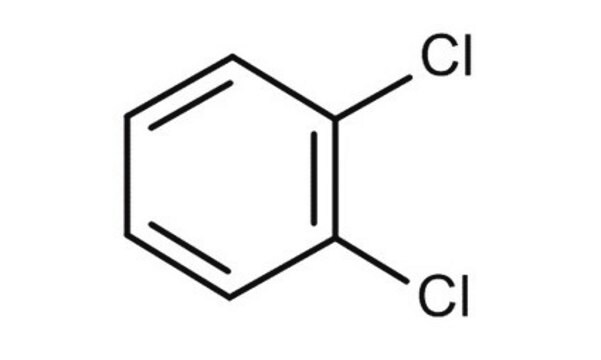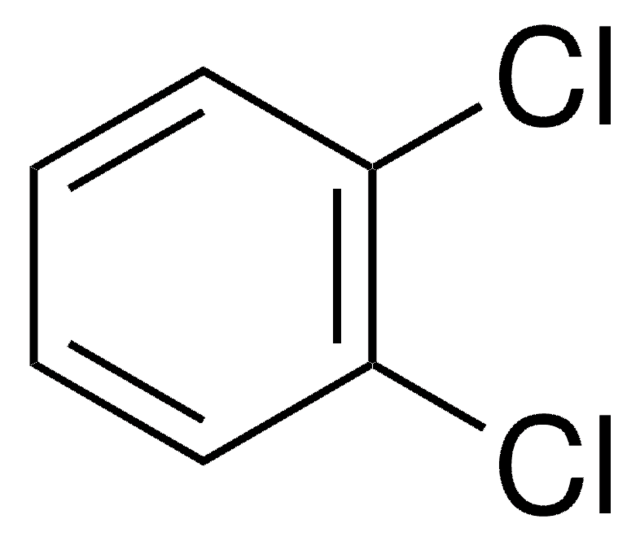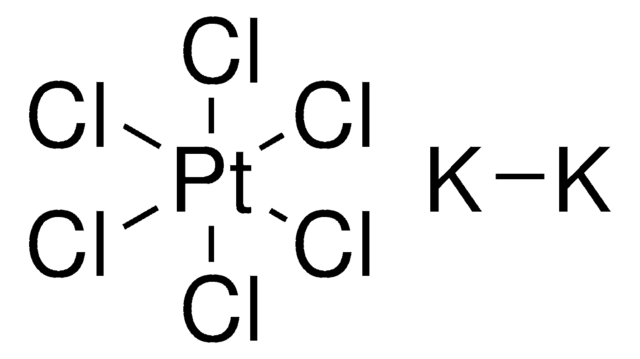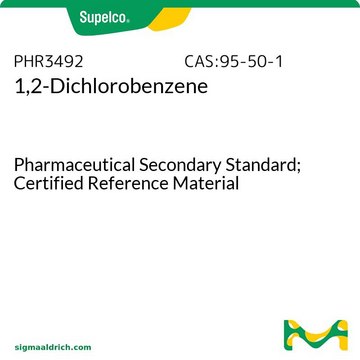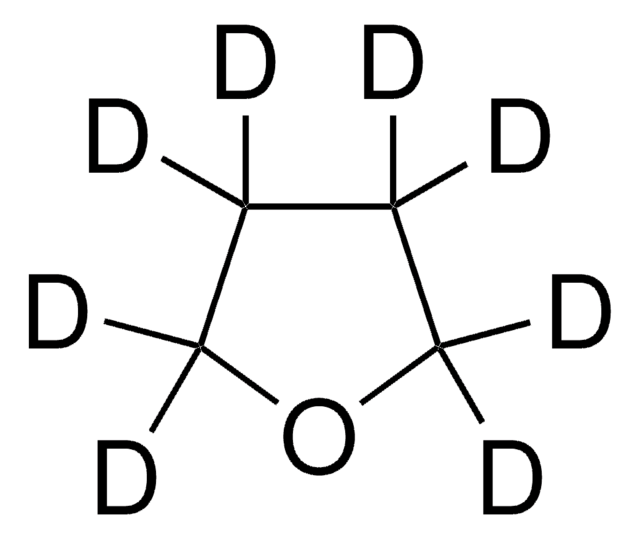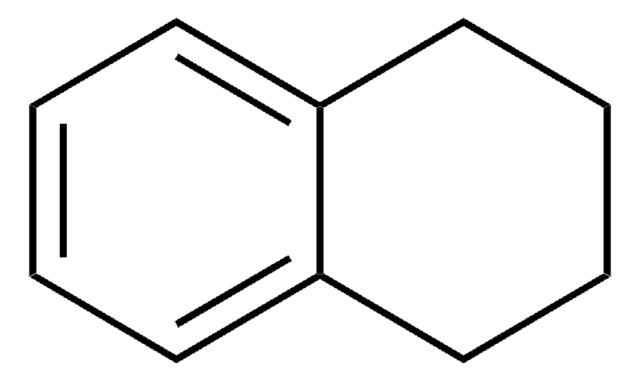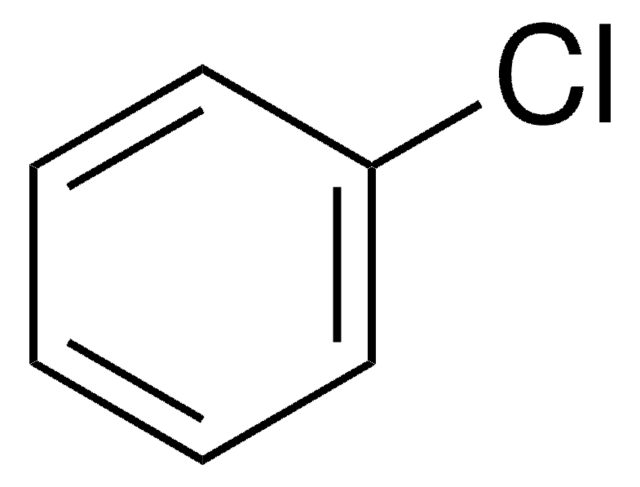おすすめの製品
グレード
reagent
品質水準
蒸気密度
5.1 (vs air)
蒸気圧
1.2 mmHg ( 20 °C)
1.6 mmHg ( 35 °C)
製品種目
ReagentPlus®
アッセイ
99%
フォーム
liquid
自己発火温度
1198 °F
expl. lim.
9.2 %
dilution
(for general lab use)
屈折率
n20/D 1.551 (lit.)
bp
178-180 °C (lit.)
mp
−18-−17 °C (lit.)
密度
1.306 g/mL at 25 °C (lit.)
SMILES記法
Clc1ccccc1Cl
InChI
1S/C6H4Cl2/c7-5-3-1-2-4-6(5)8/h1-4H
InChI Key
RFFLAFLAYFXFSW-UHFFFAOYSA-N
類似した製品をお探しですか? 訪問 製品比較ガイド
アプリケーション
- In the Wohl-Ziegler bromination of methoxyimino-o-tolyl-acetic acid methyl esters.
- To synthesize poly(butyleneterephthalate) copolyesters via polycondensation.
法的情報
シグナルワード
Warning
危険有害性の分類
Acute Tox. 4 Inhalation - Acute Tox. 4 Oral - Aquatic Acute 1 - Aquatic Chronic 1 - Eye Irrit. 2 - Skin Irrit. 2 - Skin Sens. 1B - STOT SE 3
ターゲットの組織
Respiratory system
保管分類コード
6.1C - Combustible acute toxic Cat.3 / toxic compounds or compounds which causing chronic effects
WGK
WGK 2
引火点(°F)
150.8 °F - closed cup
引火点(℃)
66.0 °C - closed cup
適用法令
試験研究用途を考慮した関連法令を主に挙げております。化学物質以外については、一部の情報のみ提供しています。 製品を安全かつ合法的に使用することは、使用者の義務です。最新情報により修正される場合があります。WEBの反映には時間を要することがあるため、適宜SDSをご参照ください。
PRTR
第一種指定化学物質
消防法
第4類:引火性液体
第二石油類
危険等級III
非水溶性液体
労働安全衛生法名称等を表示すべき危険物及び有害物
名称等を表示すべき危険物及び有害物
労働安全衛生法名称等を通知すべき危険物及び有害物
名称等を通知すべき危険物及び有害物
Jan Code
D56802-500ML:
D56802-100ML:4548173194301
D56802-2.5L:
D56802-BULK:
D56802-VAR:
D56802-20L:4548173194325
D56802-4L:4548173194332
D56802-25L:
D56802-25ML:
D56802-1L:4548173194318
D56802-18L:4548173277363
D56802-10L:
この製品を見ている人はこちらもチェック
ライフサイエンス、有機合成、材料科学、クロマトグラフィー、分析など、あらゆる分野の研究に経験のあるメンバーがおります。.
製品に関するお問い合わせはこちら(テクニカルサービス)